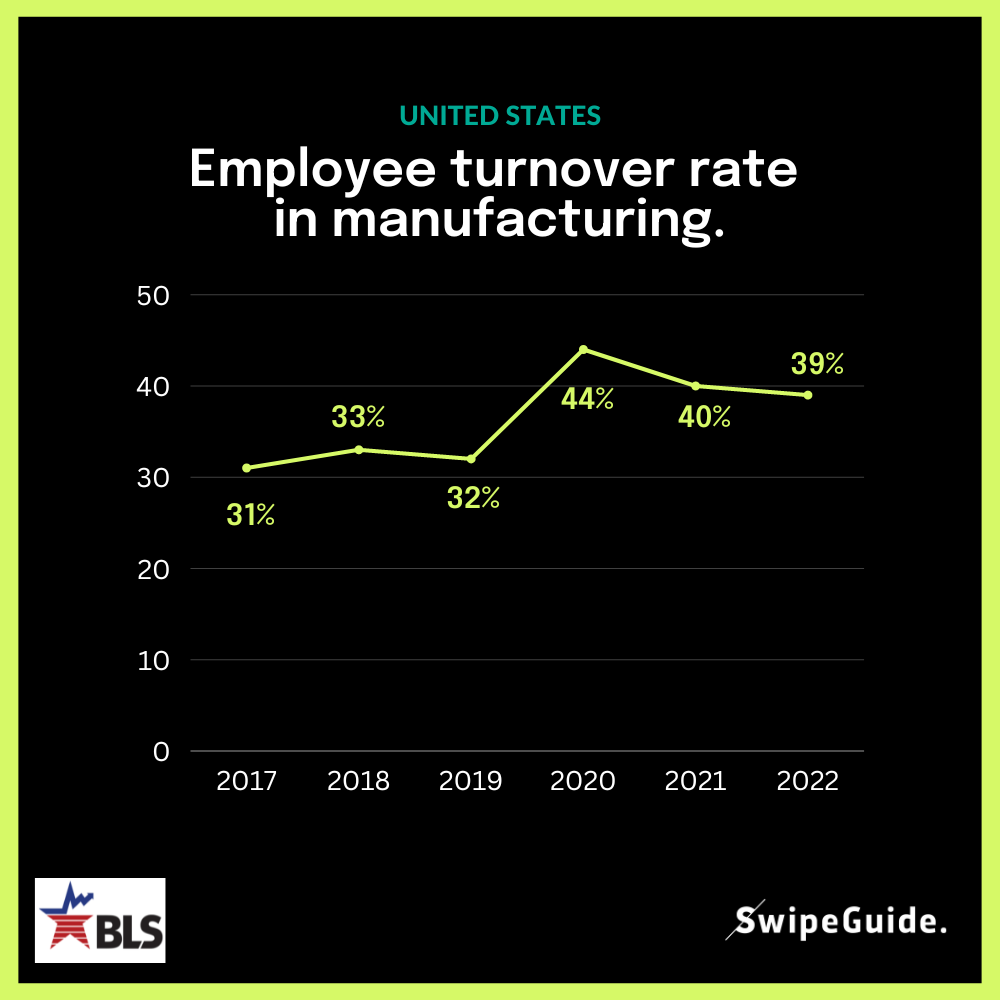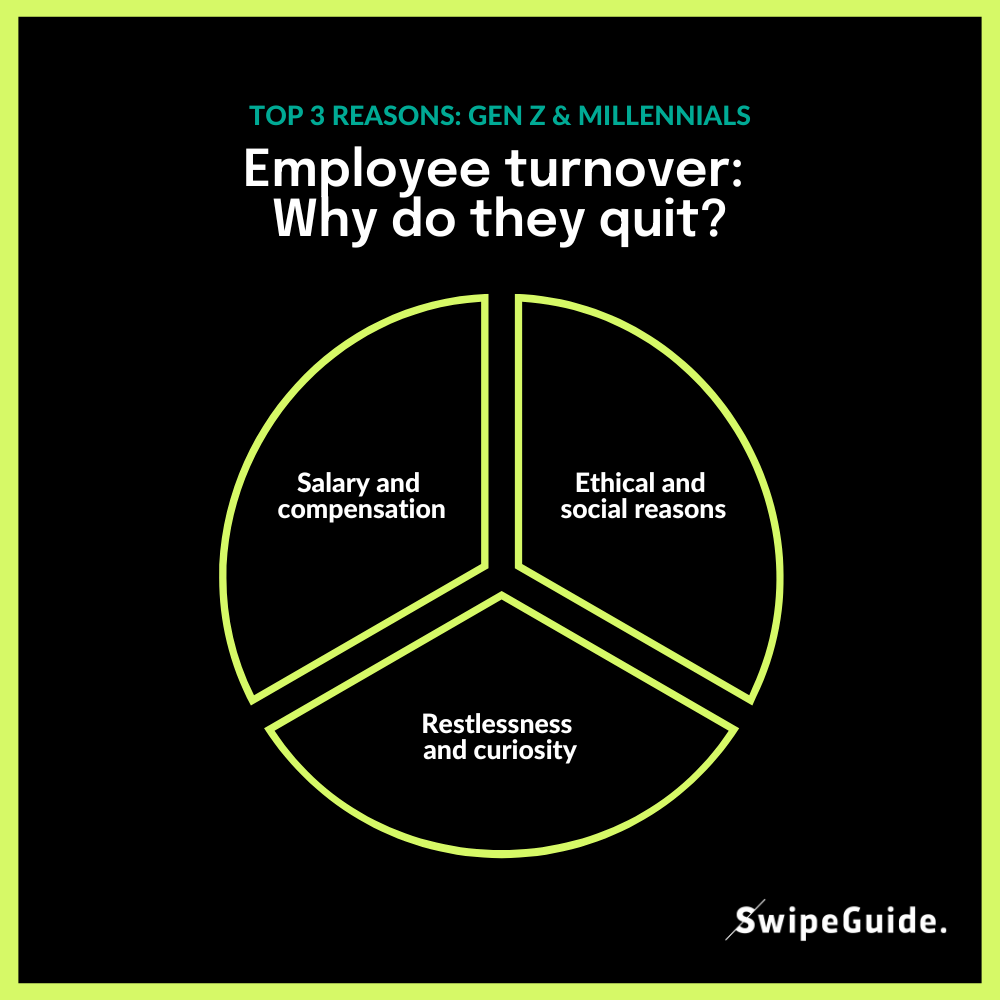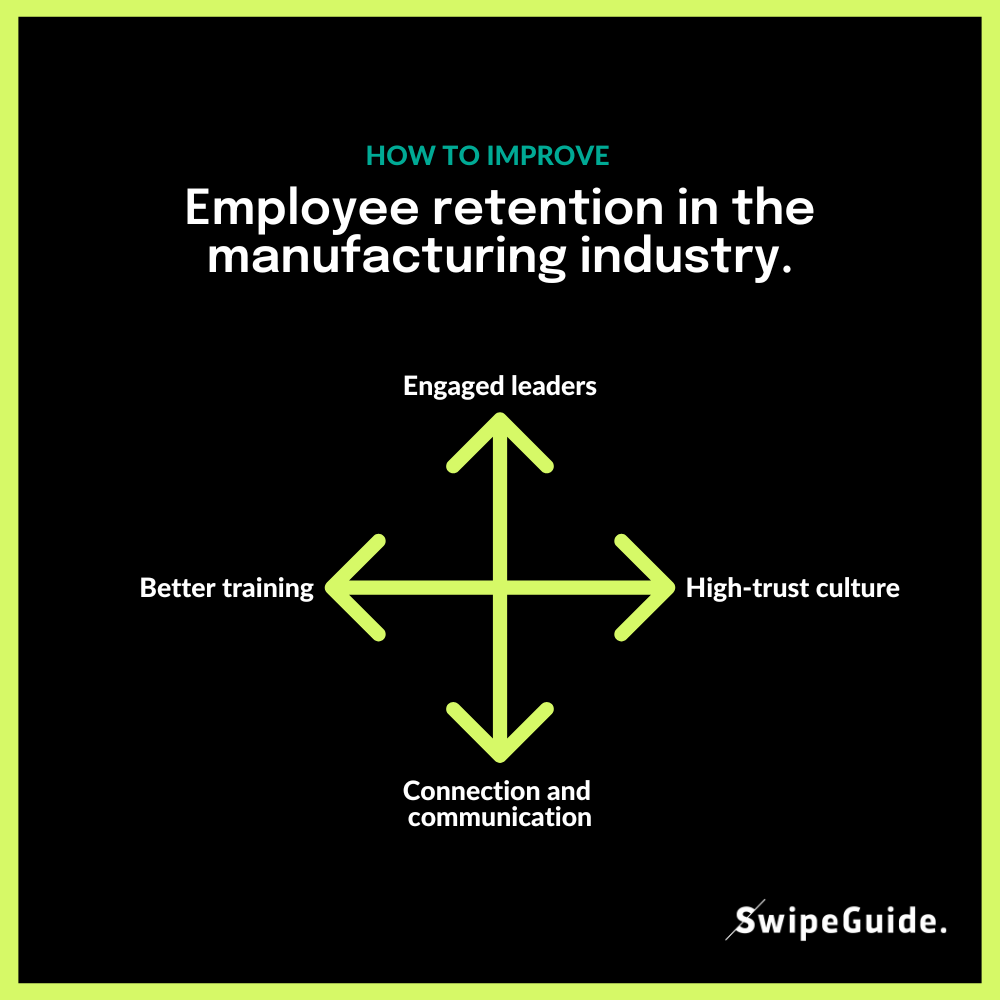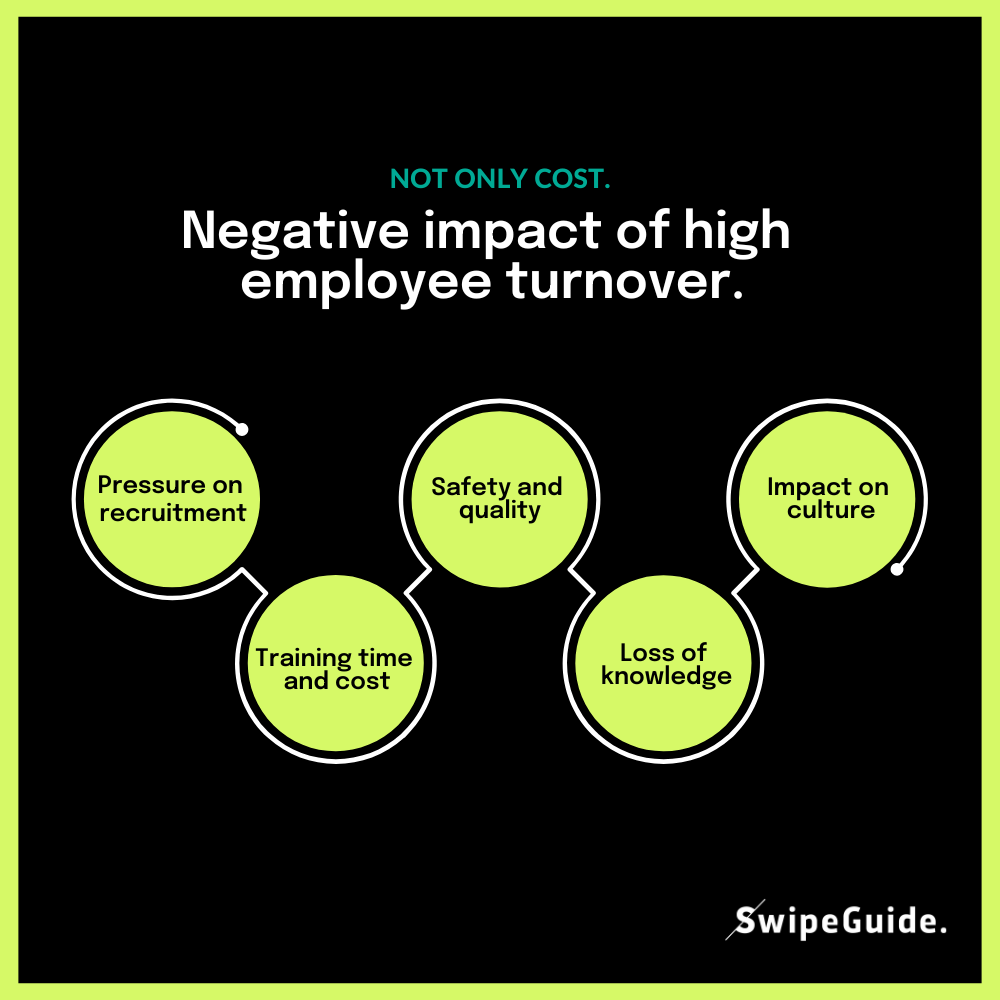Employee turnover = total number of employees who leave a company over a certain time period (usually measured per month or year)
Employee retention = an organization's ability to prevent employee turnover.
 As you can see in the chart above (based on 2017-2022 numbers by the U.S. Bureau of Labor Statistics), employee turnover in manufacturing has been fluctuating in the past years but is relatively high:
As you can see in the chart above (based on 2017-2022 numbers by the U.S. Bureau of Labor Statistics), employee turnover in manufacturing has been fluctuating in the past years but is relatively high:
More than 1/3 of the industrial workforce changed jobs last year.
According to NAM, an additional 4 million manufacturing jobs will likely be needed in the United States by 2030. For reference, the US manufacturing sector employed 13 million people in March 2023.
= Shocking fact: 30.7% more jobs are needed in the industry.
That's a lot.
Hiring more people is not enough. More people also need to stay. Replacing existing employees costs one-half to two times an employee’s annual salary.
So what can you do to improve employee retention in manufacturing?
Why do they leave?
Before looking into how to solve employee retention in the manufacturing industry, let's zoom in on the problem.
According to research by Gallup, especially the younger generations are quick to switch jobs (across industries):
- 60% say they’d be open to exploring new job opportunities
- 21% say they’ve switched jobs within the last year
- 29% feels engaged with their current job
- Increase of 22% of millennials who are interested in job hopping
Why is it that a generation feels inclined to leave a job after one or two years?
Is it how they were raised? The economy? Work ethic?
There’s not a single, simple answer.
But experts agree that it’s a combination of factors that contribute to modern industrial job hopping:

1. Ethical and social reasons.
- Many sources credit job hopping tendencies to an increased feeling of social responsibility, sustainability, and ethics.
- If a company does not do enough to offer a diverse and socially responsible work environment, they stand to lose the interest and loyalty of their workforce.
- If the objectives of the work - or the processes used to accomplish them - don’t line up with the employee’s own moral compass, they’ll feel the need to move on.
- Examples: feeling of unfair treatment, bad relationship with colleagues, mission and vision of the company are not aligned with personal values.
2. Salary.
- While most people are not solely motivated by higher salaries and better wages, the competitive job market makes it easy to seek better pay or more lucrative benefits elsewhere.
- Combined with the above factors regarding ethics, a competitive salary is often enough to motivate people to seek new opportunities.
- Examples: compensation is not on par with other companies.
3. Restlessness and curiosity.
- Limitless information and curiosity about opportunities for new experiences and personal growth makes it easy to look for a more exciting career opportunity.
- If this growth and engagement doesn’t come from their current job, people are likely to go looking for one that does.
- Examples: instead of progressing internally, people look for career development outside of the current organization.
+ Not lazy.
Older generations frequently accuse the younger generations of being lazy. This is not true. In fact, 73% of Millennials and Gen Z work more than 40 hours a week.
If companies can motivate them and create real value for them, they can increase their tenure while also harnessing the potential of a driven and motivated demographic.
Why should you care about retention?
Hiring a new person can cost up to 2 times an employee’s annual salary.
But employee turnover impacts more than just cost.
1. Pressure on recruitment.
Higher turnover means that you’ll need to spend more time and resources sourcing qualified employees. This places a burden on HR teams and also strains existing recruitment budgets.
2. Increased training time and cost.
High turnover means more training, more often. New employees need to be carefully educated for their roles in production lines and in the field, and traditional training methods can take many months to bring a new recruit up to speed. In the meantime, your productivity and efficiency decreases due to an under-trained workforce.
3. Safety and product quality.
Safety on the shop floor, as well as efficiency and product quality, all rely on the assumption that the employees performing the tasks are well-trained and experienced. A new and undertrained employee poses a serious risk not only to your bottom line, but to general employee safety as well.
4. Loss of knowledge and productivity.
As employees leave your workforce, they can often take crucial operational knowledge with them. High turnover rates mean potentially more knowledge lost, so systems need to be in place to continuously capture and evaluate this information as it’s used on the factory floor.
5. Impact on culture.
A high employee turnover can have a negative impact on your company culture, too. If employees see their peers consistently leaving for “better” opportunities (whether that’s true or not), it can make them feel restless and dissatisfied in their own positions.
What can you do?
So how to can you improve employee retention in the manufacturing industry? As you can imagine, the solution is not a one-time fix. Most often, it's about a change in culture, leadership, and way-of-working.
If this is lacking, your best employees will find it somewhere else.
Mack Story, author of the Blue-Collar Leadership books, highlights some strategies to retain your most valuable employees: 
1. To engage the workforce, engage the leaders.
The number one reason people quit a job is the relationship with their boss.
"Leaders are responsible for employee turnover and retention. The most high impact individuals on your front line, who have been developed and are leading themselves well, expect and deserve to be led well", Mack says.
If they feel they're treated in an unfair way, they will leave for a place where they are valued and appreciated.
2. Trust and responsibility.
As manufacturing processes become more digitized and complex, front line team members will need to perform a more diverse range of tasks throughout their daily routines.
This is a great opportunity to give this tech-savvy new workforce a wide range of challenging and rewarding tasks. Trusting people to succeed in their tasks and giving them more responsibility is a huge motivating factor.
"Hoping for sustained organizational performance in a low-trust culture is like expecting to keep harvesting fruit from a dying tree" - Stephen M. R. Covey
3. Connection leads to contribution.
Communication and personal connection is often undervalued in manufacturing environments. However, lacking or bad communication doesn't only contribute to a negative team spirit, but it can also lead to safety risks, lagging quality, and people dropping off.
"The sooner I connected with team members on an emotional level, the quicker they became receptive to me and my message. I authentically conveyed to the team members that they mattered. They had to genuinely feel it. It wasn’t about what I said, but who I was. They wouldn’t buy-in to my mission unless they bought-in to me", Mack states.
4. Better training.
Without a comprehensive onboarding and continuous training that develop the unique skills and ambitions of team members, most talent will leave.
If people don't get the chance to improve their skills and prove what they're capable of, motivation most definitely will drop. Having a good frontline training program in place, including accessible manufacturing SOPs, helps teams upskill and reskill, boost motivation - and hopefully improve your retention rates.
Better training supports the most ambitious team members (your most valuable resource) that you should strive to retain.
Want to learn more about how to improve employee retention in the manufacturing industry?
👉 Empowering a Culture of Operational Excellence
👉 Smooth frontline training programs.
👉 Video interview with Mack Story: how to be a successful and inspiring leader in manufacturing.



.jpg?width=305&name=20210420_Swipeguide_002_%20(2).jpg)




